Reduce, reuse, and recycle are the heart and soul of sustainability. These 3 R’s are important practices for a sustainable lifestyle. These 3 R’s aim to reduce waste. These three principles can be applied in our daily lives to live more sustainably.
These three principles can be used in our homes, businesses, and communities. They serve as the foundation for sustainable living. We will learn each of these concepts in this article and how to implement them in our lives, along with how they might contribute to more sustainable living.
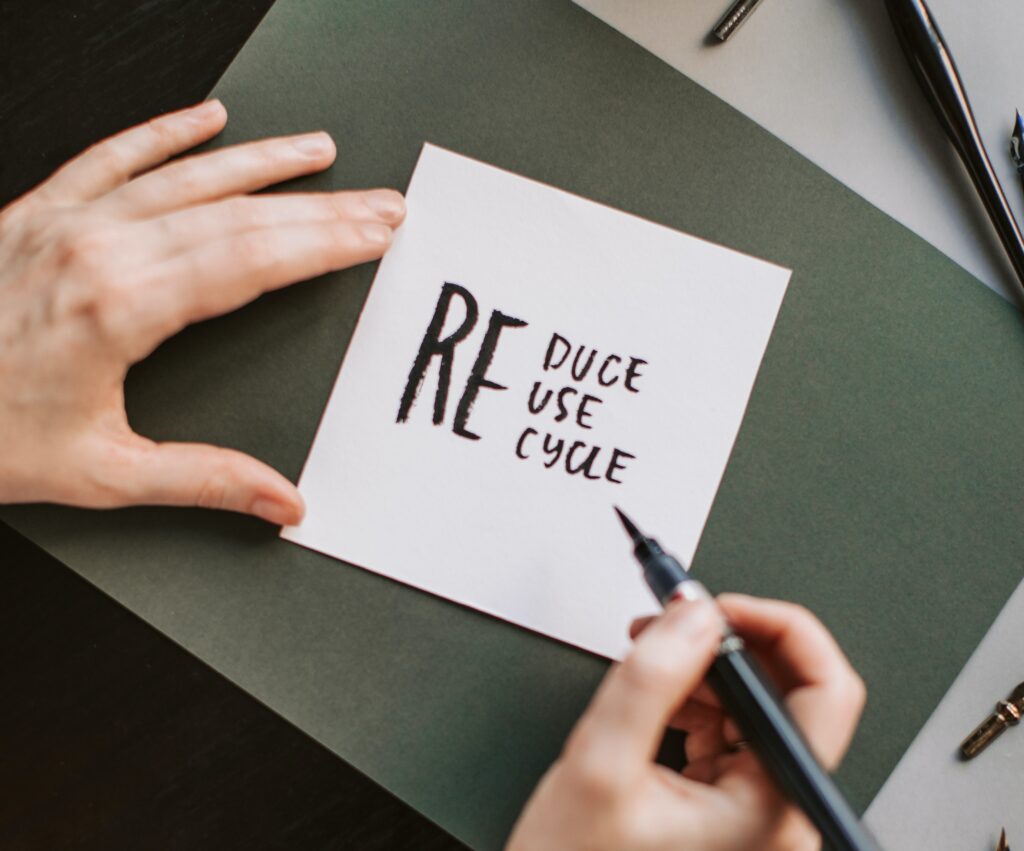
Reduce, Reuse, and Recycle meaning.
What are the 3 R’s of recycling?
Reduce the waste as much as possible.
The term reduce refers to reducing the amount of waste we are generating. We can achieve this by buying reusable water bottles, reusable bags, and reusable cutlery, and we need to avoid single-use plastic bottles, plastic bags, and plastic containers.
We need to support responsible consumption and production. By choosing sustainable and eco-friendly products, We can buy biodegradable and recycled materials that last longer and reduce waste.
Reuse: some things we can use again which can otherwise end up in landfills
Reusing means we can use items multiple times before throwing them away after a single use. Find many ways to use the product by repairing it or making something new out of it. There are many ways to use products that might otherwise end up in landfills.
Recycle: Recycling is the process of converting waste into new products.
Recycling helps save natural resources and decrease waste. When we recycle products, it helps reduce waste going into landfills. Recycling helps lower energy consumption, decrease greenhouse gas emissions, and reduce the use of new raw materials.
Reduce, Reuse, and recycle examples
REDUCE
How can we implement the 3 R’s in our daily lives?
Use fewer single-use items, such as plastic bags, cutlery, plastic bottles, straws, and containers.
Think before you buy something: is it useful? How many times can I use this? How long can I use this?
For example, buy fewer single-use plastic water bottles They are used and thrown away after one use. Trash will end up in our landfills and stay there for hundreds of years, finally getting into our oceans, which can harm innocent marine animals.
10 ways to reduce, reuse, and recycle.
- 1. We can take our cloth bags whenever we go shopping. Always refuse single-use plastic bags.
- 2. Take a reusable straw and mug for coconut water, juice, coffee, or any liquids.
- 3. Always keep a water bottle with you whenever you go out.
- 4. Keep reusable cutlery in your bag; use it whenever you go to restaurants or outings.
- 5. Do not buy items with unnecessary packing.
- 6. Swap tissue paper with cloth napkins.
- 7. Use beeswax wraps instead of aluminum foil.
- 8. Lower electricity and water usage.
- 9. Do not waste food.
- 10. Lower carbon emissions by switching off the lights when not in use, using public transportation, eating less meat, and using cycles for a short distances.

REUSE
Find ways to reuse products again.
10 ways to Reuse
- 1. Reuse your old clothes, donate to needy people, or make them for something like bath mats, bags, gift wrapping, etc.
- 2. Use glass jars that come with some items like jams, pickles, etc.
- 3. Use plastic bottles for planting, watering, bird feeders, etc.
- 4. Donate toys, furniture, appliances, or other items you do not use to NGOs and needy people. It will be reused. Instead, that would have ended up in the trash and wasted.
- 5. Give electronic items you are not using to your family, friends, and needy people.
- 6. Composting is another way of reusing waste food into fertilizer.
- 7. A carton box comes with online deliveries that can be used to store items, pack gifts, couriers, etc.
- 8. Collecting rainwater.
- 9. Egg cartons are great as a seed starter for planting.
- 10. Wash and use the medicinal container for storing needles, pins, buttons, clips, and any small objects.
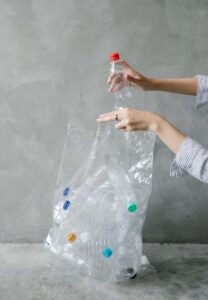
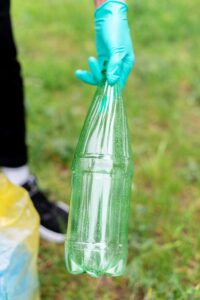


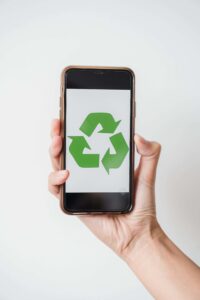
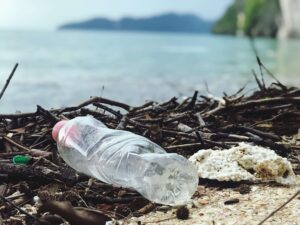
RECYCLE
Recycling is the last option. When we cannot reuse the item, we can give it to recycling.
Why is recycling important?
It will reduce the usage of new raw materials, energy, and water, and less waste will go into landfills.
We cannot recycle everything we use, such as toothbrushes, which are made up of different types of plastic. They are difficult to separate; hence, they are not recycled, so we have to think before we buy anything
Responsibly separate them and put them into their respective recycling bins.
3 ways to help recycle
- 1. Buy recycled materials.
- 2. Buy recyclable things; see the recycle code on the product.
- 3. Things that can be sent to recycling are E-waste, Old notebooks, newspapers, glass jars, plastic bags, plastic bottles, cardboard, old clothes, food and beverage containers, aluminum cans, books, etc.
How do reduce, reuse, recycle help the environment?
The importance of the 3 Rs in the environment
The 3Rs will help stop waste from going into landfills.
From producing food, transportation, and consumption, a lot of energy, resources, and labor are involved. We need to be more conscious of food waste; we are throwing it away every day and it will go into landfills, which is the cause of greenhouse gas emissions. Try composting.
How does eating less meat decreases greenhouse gas or lower carbon footprint?
By having less meat and poultry, we can lower greenhouse gases. The amount of land used for raising farm animals leads to deforestation. And livestock produce methane.
Recycling reduces the use of natural resources like energy and water.
Start reducing electricity and water consumption in your home.
By just adapting simple steps in our everyday lives, we can prevent our environment and future generations from getting affected.
Start with simple steps to make a big difference.
Make conscious decisions about what you are consuming, lower single-use items, and buy pre-loved items. If possible, try reusing objects in new ways. When these habits become part of our lives, it makes a big difference.
The extraction and burning of fossil fuels and coal can produce enormous amounts of greenhouse gases. Which will trap the heat and make us feel hotter.
By using sustainable energy resources like solar, wind, etc., we can lower greenhouse gas emissions.
We should use nontoxic home cleaning products. The harsh chemicals in our toilet cleaners and surface cleaners contaminate waterways, reach oceans, and harm aquatic life.
Start making eco-friendly, sustainable, and non-toxic cleaners at home. Learn how to make bio enzymes easily at home.
Using public transportation as much as possible lowers each person’s carbon footprint.
Plant as many trees as you can.
Adapting sustainable agriculture and organic farming can save the soil and water from contamination by chemicals and pesticides.
Am Jeenath is an engineer in biotech with a diploma in clinical research. I am the mother of a son. And I love helping people live sustainably. I educate people on sustainable living and share sustainability tips, ideas, brands, and DIYs.


I Appreciate For Your Good Efforts To Aware Citizens
Usually I do not read article on blogs however I would like to say that this writeup very compelled me to take a look at and do so Your writing taste has been amazed me Thanks quite nice post.
Thank you